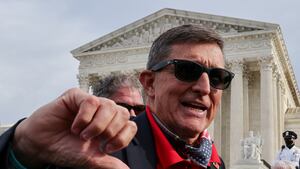As millions of vaccinated people emerge from lockdown, returning to shops, bars and restaurants, American life is kicking back into high gear. And in the United States in 2021, that means elected officials and crime experts are bracing for an unusually deadly summer marked by wanton gun violence.
But the reasons for and locations of the likely surge in shootings, a trend that began before but has accelerated during the pandemic, are more complicated than the effects of lockdowns or traditional seasonal shifts in urban crime patterns. Instead, experts say, everything from a flood of fentanyl and open-air drug markets to surging gun violence in rural areas and small towns could make for a remarkable season of tragedy.
Homicides generally spike every summer, but 2020 saw a spike of shootings and murders that far outpaced even the typical surge. One analysis from the Council on Criminal Justice, a research and policy group, found a 30 percent increase in homicides across 34 U.S. cities compared to 2019, and Jeff Asher, an independent crime analyst, found murder up 37 percent across 57 localities. An analysis of gun-violence data by Everytown, a gun-control advocacy group, suggests 2020 had the highest rate of gun deaths in the last 20 years.
Other types of crime, including rape and robberies, seemed to drop in 2020, likely due in part to stay-at-home orders. But homicides and shootings were already increasing between 2014 and 2019, meaning even a return to 2019 murder levels wouldn’t indicate crime is on a good track.
“After 2014, shootings went up, and they continued to go up, and they accelerated wildly last year,” said John Roman, a crime researcher with NORC at the University of Chicago. “Why is that? We don’t know, but the thinking that it’s suddenly going to stop strikes me as wishful thinking. The best [crime] predictor of what happens this year is what happened last year.”
One challenge in interpreting crime data in general—and making sense of the 2020 surge in particular—is the slow pace at which it is published. National news outlets have run many stories highlighting the murder wave in large U.S. cities, painting a picture of spikes that are unique to those generally liberal urban areas. “The U.S. saw significant crime rise across major cities in 2020 [a]nd it’s not letting up,” read one CNN headline from April typifying the genre.
But one reason reporters tend to focus on crime in large cities is because they have the capacity to publish more frequent crime statistics, whereas other smaller towns and rural areas don’t or choose not to.
The grim reality is that while murder spikes were most pronounced in large cities, shootings and homicides were up significantly across all U.S jurisdictions last year. Preliminary FBI data from nearly 13,000 law enforcement agencies found cities with 25,000 people or less saw 25 percent increases in murder last year, and mid-sized cities had increases ranging from 24 to 31 percent. Final FBI data will be published in September.
“Even in the suburbs and rural areas it was up 15 percent,” Asher told The Daily Beast. “Crime fell last year in America, but murder rose historically.”
So what are the most plausible explanations? One likely factor is a jump in the number of guns in America, which somehow has gotten even more out of hand. FBI data suggests nearly 40 million guns were sold last year, a 40 percent increase from 2019. New data from Northeastern University and the Harvard Injury Control Research Center found roughly 20 percent of those who bought guns last year were first-time gun owners.
The research also found 39 percent of American households now own guns, up from 32 percent five years earlier.
“Gun crime usually occurs between people who know each other, and if you talk to cops, they’ll tell you that there are more than the traditional players who are now carrying guns,” said Chuck Wexler, the executive director of the Police Executive Research Forum.
The research literature is clear, added Daniel Webster, director of the Center for Gun Policy and Research at Johns Hopkins University: more guns mean more gun deaths. Whether that means the huge increase in 2020 gun sales is the best explanation for spiking gun violence is less clear.
“Honestly we don’t know, though we should know soon,” Webster said, pointing to the forthcoming data from the federal Bureau of Alcohol, Tobacco, Firearms (ATF), which traces crime to specific guns. “Once that data comes out, we’ll be able to see in a fairly direct way: were those gun sales used quickly in crime, or is this just a coincidence.” Webster said his main concern going forward is that more guns, combined with more guns in public places because states are making it easier to carry firearms legally, coupled with more illegally-carried guns due to a loosely regulated secondary gun market, all increase the chance for violence. “As a public health epidemiologist, basically what that translates to is more exposure to guns, more people in more places with firearms, and even though the vast majority are going to be safe and not harm themselves or others, some portion will,” he said.
The pandemic itself stands as another likely explanation for the increase in shootings and homicides. And, indeed, this overlaps with the increase in gun sales, as purchases spiked in the early months of the pandemic, even before police-violence protests stoked fears of unrest. The pandemic weakened community institutions that experts say typically help deter crime. Patrick Sharkey, a sociologist and criminologist at Princeton, has said the corresponding disconnection from places like schools and pools and rec centers all help increase the conditions that may lead to violent behavior. Roman at the University of Chicago, too, has argued that the disruption of routine activities for large numbers of young men in poor areas likely contributed to violence with other young men in similar situations. But he told The Daily Beast that the infusion of federal stimulus funds to state and local governments should help support those institutions and individuals who help keep people from committing crime and being victim to crime, including therapists and social workers, and libraries and pools. A less plausible explanation for the rise in homicides, though one that gets quite a bit of airtime on cable news, is the so-called de-policing theory, which suggests police have scaled back their work in light of the Black Lives Matter protests. Dating to at least 2014, the suggestion has been that police are either doing their jobs less well because of low morale from being criticized, or simply being less proactive in the field out of fear of discipline or even criminal punishment. Some pundits have pointed to cities like Los Angeles and Chicago, which saw stark increases in homicides last year, as evidence that activist pressure to “defund the police” is driving the murder surge.
But even some law-enforcement leaders acknowledge the weaknesses of the defund theory.
Laura Cooper, executive director of the Major Cities Chiefs Association, which represents police executives in the U.S. and Canada, told The Daily Beast that the defund the police movement “has not been pervasive” across their membership cities. And, she noted, “in a lot of places, they’ve actually increased police budgets.” Cooper added their data shows violent crime has increased, even in the first quarter of 2021, regardless of whether cities increased or decreased their police budgets.
That’s not to say tensions with the police have had no relationship to crime levels. If police are perceived as illegitimate, then community members tend to be less likely to cooperate or assist cops in investigations. “If you ask police chiefs what will make a difference, they will tell you that the most important thing is regaining public trust with the community,” said Wexler. “It sounds sort of fuzzy, but it’s not.”
One likely explanation for 2020 gun violence that gets less airtime is the opioid crisis and the corresponding explosion of open-air drug markets. Preliminary CDC data suggests more than 87,000 Americans died of drug overdoses last year, a 29 percent increase from 2019. Black Americans were disproportionately affected, and the drug overdoses were driven largely by fentanyl and other opioids. Roman said the fentanyl crisis could help explain some of the geographic spillover in shootings and homicides we’re seeing. “Open-air drug markets are the ultimate recipe for violence,” he said. “You have dealers fighting over customers, customers fighting with dealers, wholesale networks on top of that competing for market share. New beefs, turf wars, gangs.” Roman thinks one reason politicians focus less on opioids is because it’s just a massive problem that defies demographic realities, and has no obvious solution. “But it’s pretty myopic,” he said. “We have this huge [opioid] problem we all know about it. And we’ve decided it isn’t related to this other murder problem that takes place in the exact same space.”
Webster of Johns Hopkins agrees the role of drugs and illegal drug markets is “an under-examined” factor.
“The increase that we’re seeing in overdose deaths really is a signal that obviously drug markets are very active places,” he said. “So I actually suspect that there is a connection, though what we do about is a far more challenging question.” Webster believes drug markets are a less-studied factor because they’re just harder to measure, and “we get too comfortable” with other explanations, like policing and anger over it.
The first few months of 2021 have shown few signs of improvement in terms of shootings and homicides. One analysis from Asher of 37 cities suggested murders were up 18 percent over the same period last year, and gun sales have continued apace.
As the public and elected officials grapple with these and forthcoming crime statistics, there will be a familiar pressure to respond by increasing police budgets, even though policing is more of an indirect response to violence. Indeed, in the New York City mayoral race, three leading candidates have all backed more resources for cops even as rivals call for the NYPD to be defunded.
But if spending more on police can have a marginal benefit in crime reduction, as the country learned from its largest protest wave in history, it can also help provoke backlash and long-term community harm.
“I think the story is pretty simple and we make it pretty complicated,” said Roman. “The reason you get a gun is because you’re afraid of someone using that gun against you. What we can do is change how fearful people are of other people with guns. That’s really the only way out. It’s the difficult path, and it’s not clear how much of that runs through traditional policing.”








